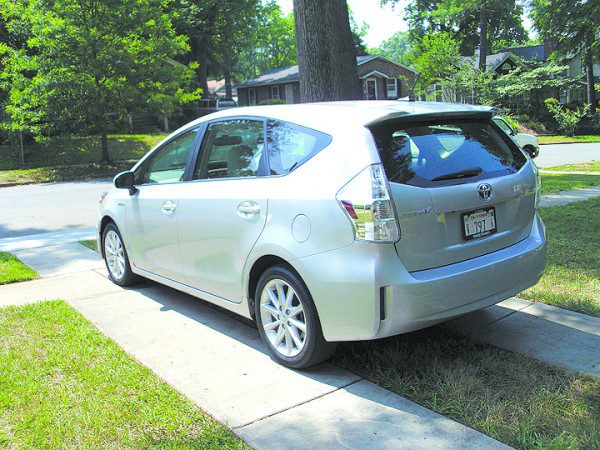
I recently returned from Charlotte, NC, where I attended the press preview for Toyota’s new Prius v hybrid vehicle, set to hit the nation’s showrooms in September. I came away impressed not only with the new vehicle, but with the overall achievements of the Prius since its introduction 14 years ago.
According to Prius product marketing planner Erica Gartsbeyn, Prius has become the No. 1 selling hybrid in the world with more than one million sold in the U.S. and two million more globally. She added that since Prius came on the U.S. market, it has saved about 880 million gallons of gas, about $2 billion in fuel costs and kept approximately 12 million tons of CO2 emissions from entering the atmosphere.
“According to the Carnegie Endowment, if all vehicles on the road today averaged the same 50 mpg that the Prius does, it would reduce U.S. oil consumption by about 2.4 billion barrels per year,” Gartsbeyn said. “Think of it another way — if everyone drove a Prius, we could reduce our use of imported oil by 70 percent.”
That said, the first new member of the Prius family is the Prius v, a midsize vehicle that Toyota calls “a perfect fit for young families who value space, comfort, fuel efficiency and technology.” The Prius v shares the same Hybrid Synergy Drive System as the current generation Prius Liftback, but has been designed to deliver the comfort, convenience and flexibility that Toyota thinks young American buyers want.
To achieve that goal, Prius v engineers focused on two key areas — aerodynamics and weight reduction — to help boost the Prius v’s fuel economy and performance. The end result is a vehicle that resembles a small SUV, one that is larger than its Liftback predecessor and with 58 percent more cargo space. There’s a 60/40-split rear seat that slides and reclines for passenger comfort and maximize cargo space at 34.3 cubic feet. Aerodynamic design measures optimized the Prius v’s shape and resulted in an excellent 0.29 coefficient of drag (or Cd).
Prius v has the same four drive modes — normal, Eco, Power and EV — as the current Prius, and produces 66 percent fewer smog-forming emissions than the average new vehicle. The larger vehicle causes fuel efficiency to drop a bit at 44 mpg in the city, 40 mpg on the highway and 42 mpg combined.
As for the interior, designers incorporated efficient weight-saving materials in the new Prius, including the optional Panoramic roof made of a lightweight resin that is 40 percent lighter than conventional glass roofs of similar size. Prius v seats are trimmed in SofTex, a unique material that looks like leather, but weighs about half as much and has more durability.
Pricing on the 2012 Prius v Hybrid has not been announced.
Ron Beasley is the automotive editor for Miami’s Community Newspapers. He may be contacted by calling 305-662-2277, ext. 261, or by addressing email to LetsTalkCars@aol.com.






